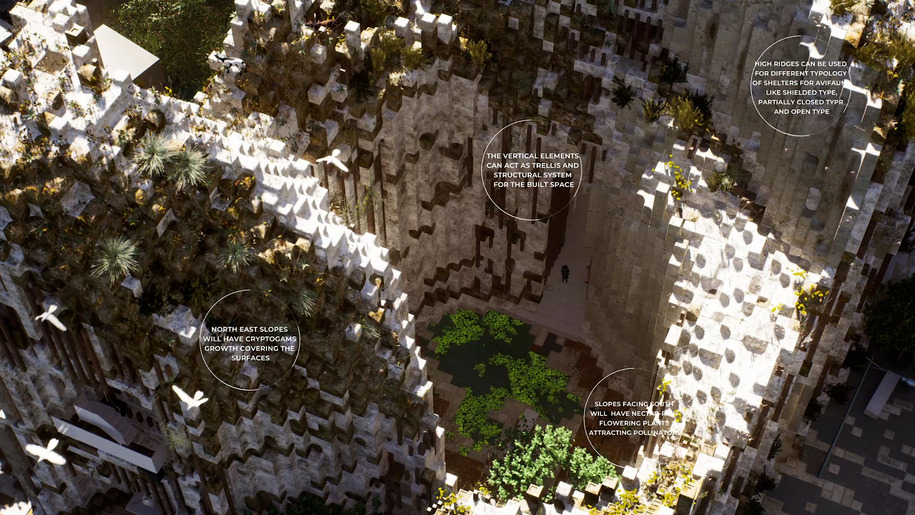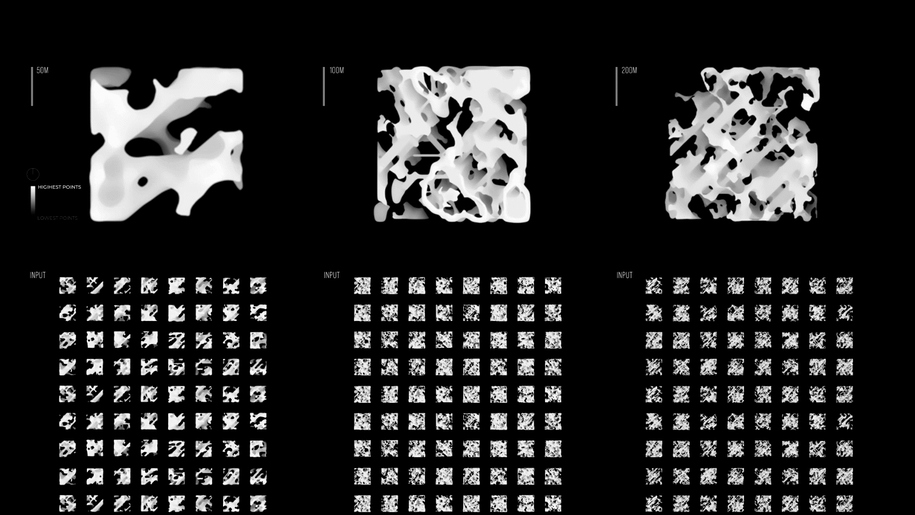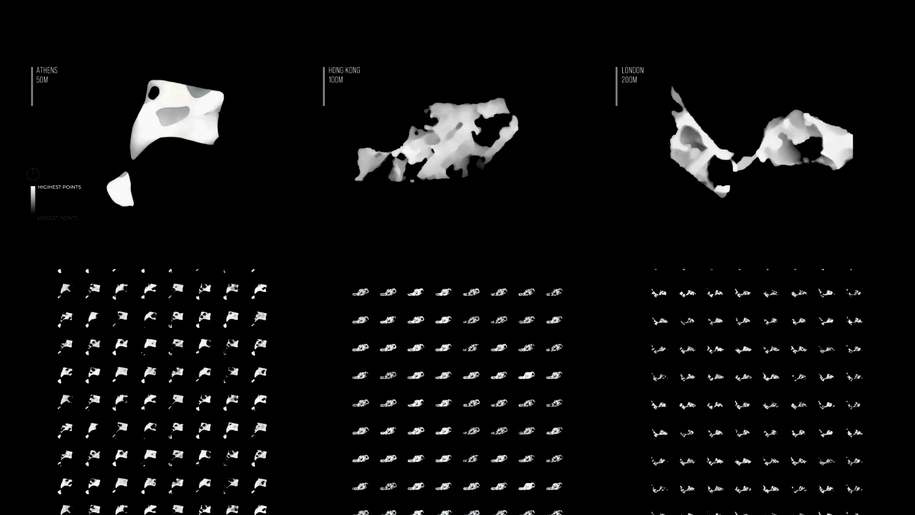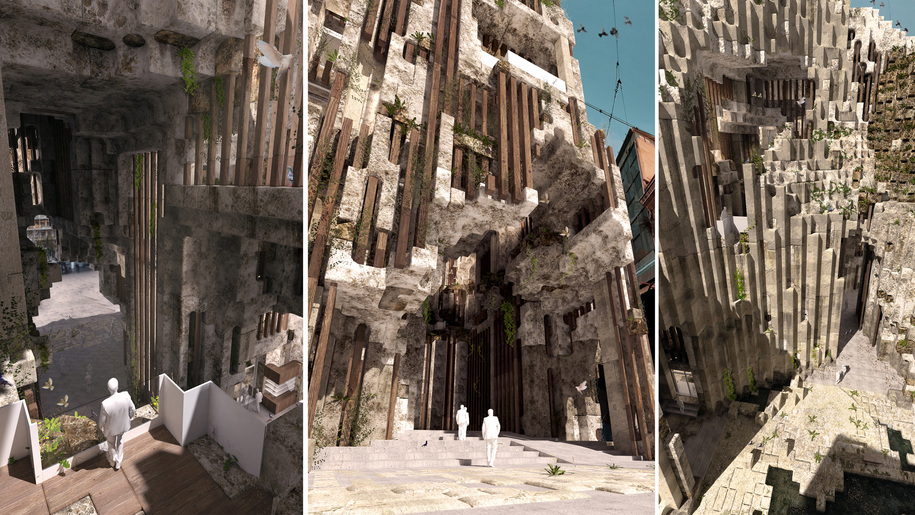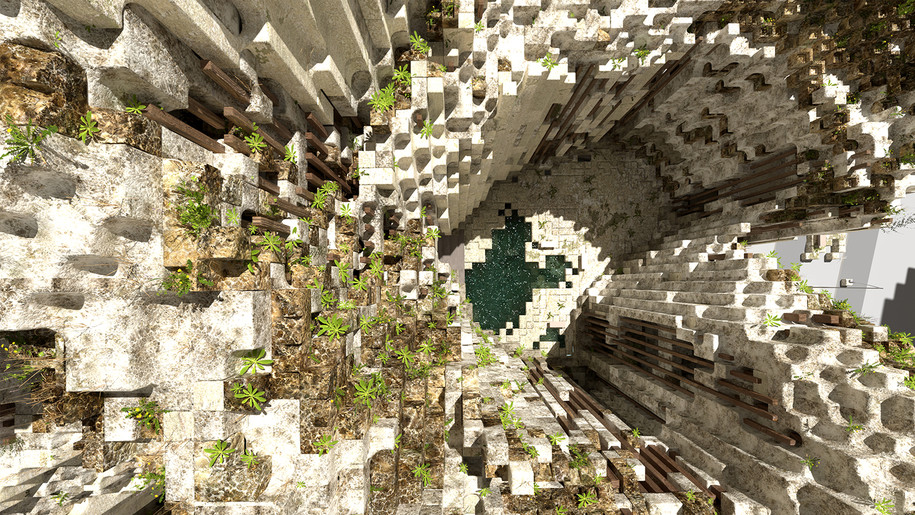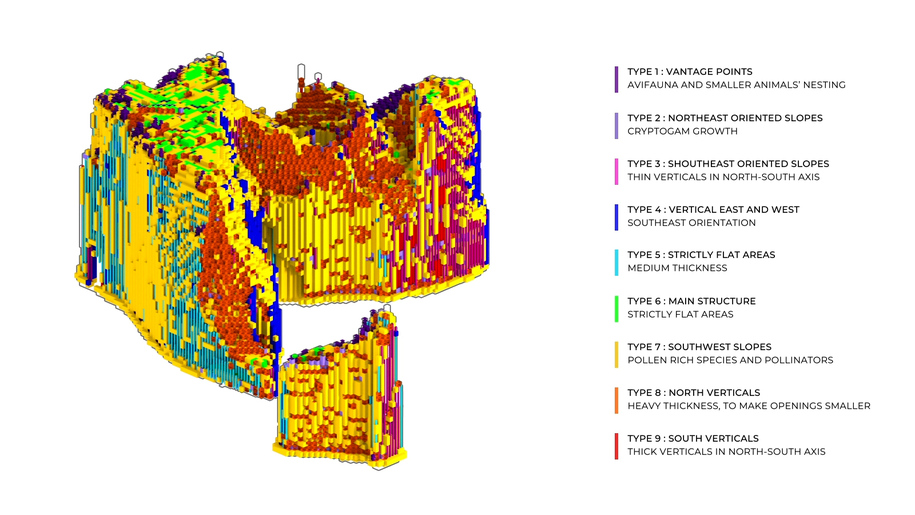CryptoGAN μεταπτυχιακή διπλωματική εργασία από τους Παναγιώτη Καλαϊτζίδη, Pooja Harumalani, Aijia Wang.
Το CryptoGAN προωθεί την ελεγχόμενη επανεισαγωγή της άγριας φύσης στην πόλη, ως μέσο επίτευξης της οικεντρικής αστικότητας.
“CryptoGAN” advocates for the monitored rewilding of the city as a means to achieve ecocentric urbanism. With the aid of computational tools and Machine Learning it proposes an adaptive design system and building typology which blur the threshold of human and non-human activity and maximize ecological productivity as a prerequisite for a prosperous urban ecosystem.
-text by the authors
As we move to the era of Symbiocene, the urban environment needs to be redefined to enable a prosperous symbiosis of both human and non-human agents. This symbiosis rests in a monitored rewilding of the city.
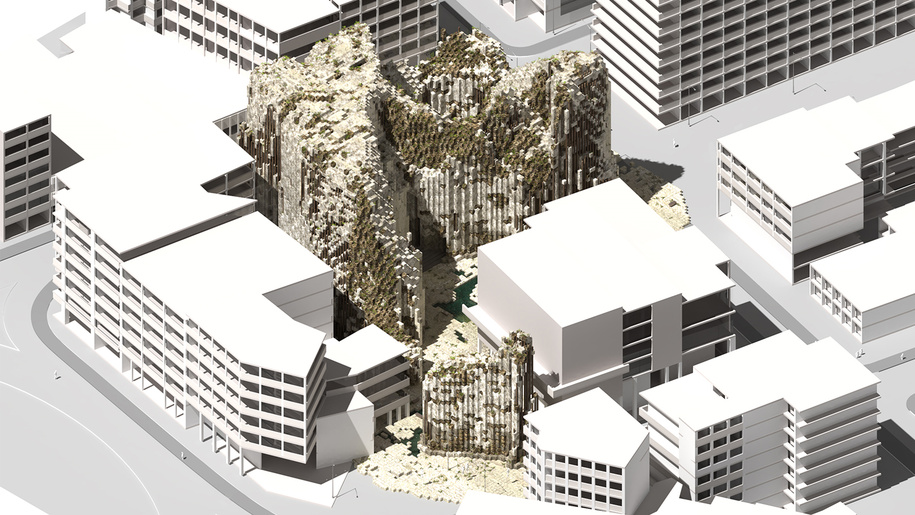
Nature in its pure essence is conducted in an orderly chaos: a flow of energy and matter which actively asserts dominance on space and searches for balance. Therefore, this conjunction of worlds is bound to set new rules of coexistence and safe interaction.
Moreover, the enormous amount of ecological data needed to define and produce space for non-humans renders machine learning an essential part of the design process. In this direction, architects take the role of the curator of ecological intelligence in the design of artificial space and eventually set the thresholds for human activity to safely interact with the unmonitored ambiguousness of the wild.
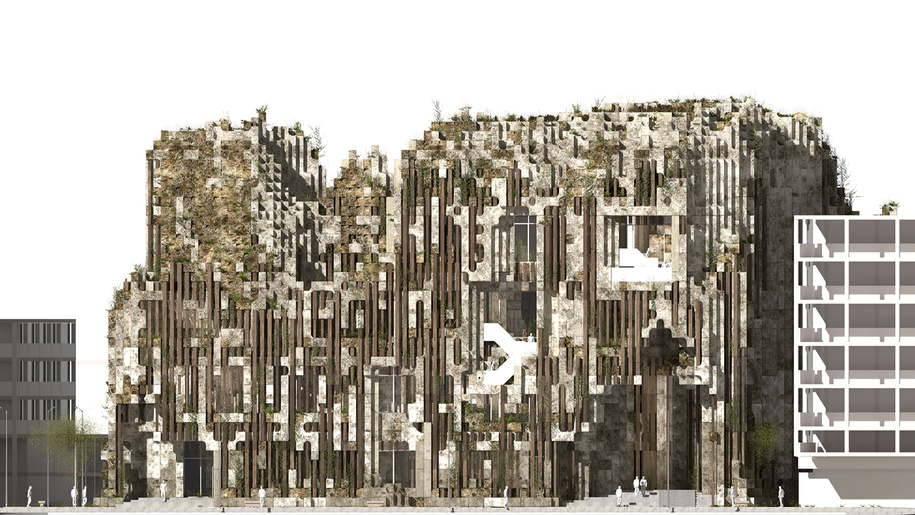
“CryptoGAN” questions how machine learning and computation can be utilized in the design of a building typology which effectively blurs the threshold between the human and the non-human activity in a symbiotic way. It offers a prototypical methodology to incorporate the forementioned elements into a design system adaptive to different kinds of ecological condition and set for maximum ecological productivity.
This space is then offered as a hub of economical activity under the principles of the Inclusive Wealth Index and eventually sets the base for the transition to the ecocentric definition of urbanism and the urban economy.
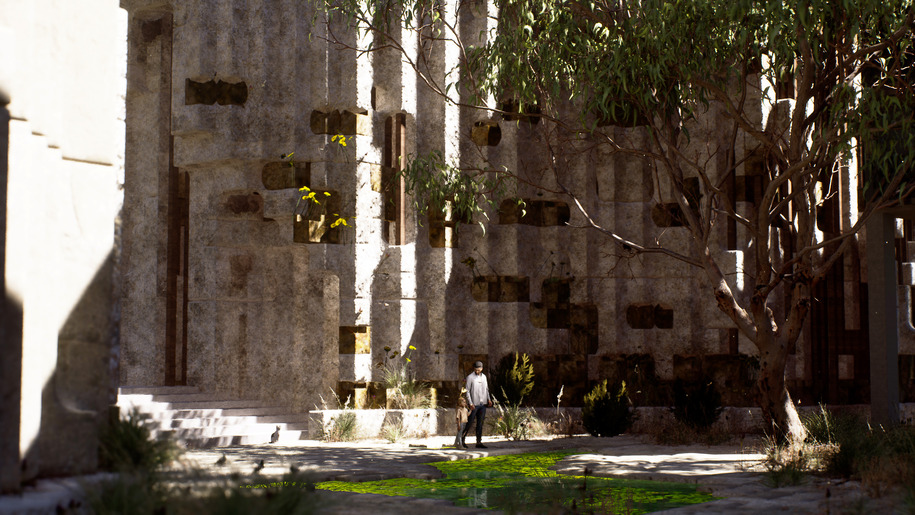
The research methodology starts by defining the ecological intelligence which buildings need to facilitate non-human growth and activity. Then it curates these data into spatial layouts embedded with the forementioned intelligence.
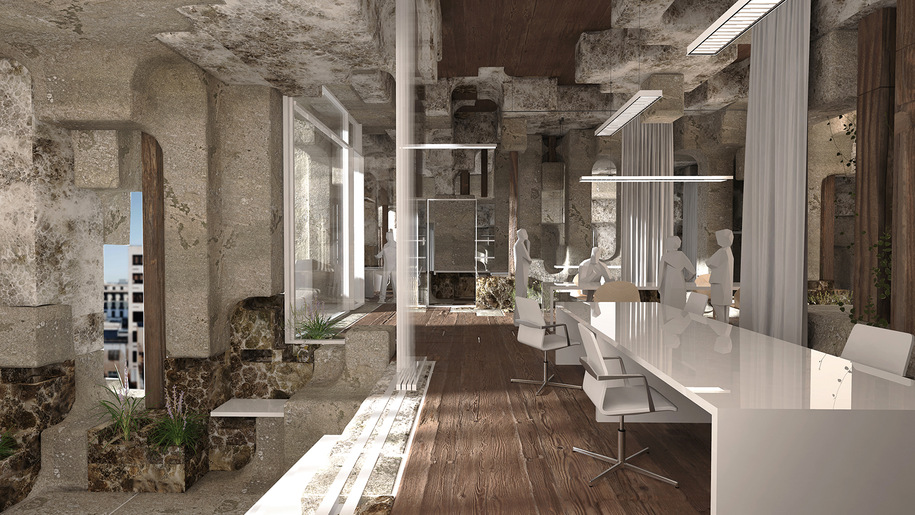
This layout dataset is further adapted to the different kinds of ecological parametres of any site. Through computational means, this layout output can be translated into a building mass and then be assembled and materialized through voxelization by orientation and function to host different species.
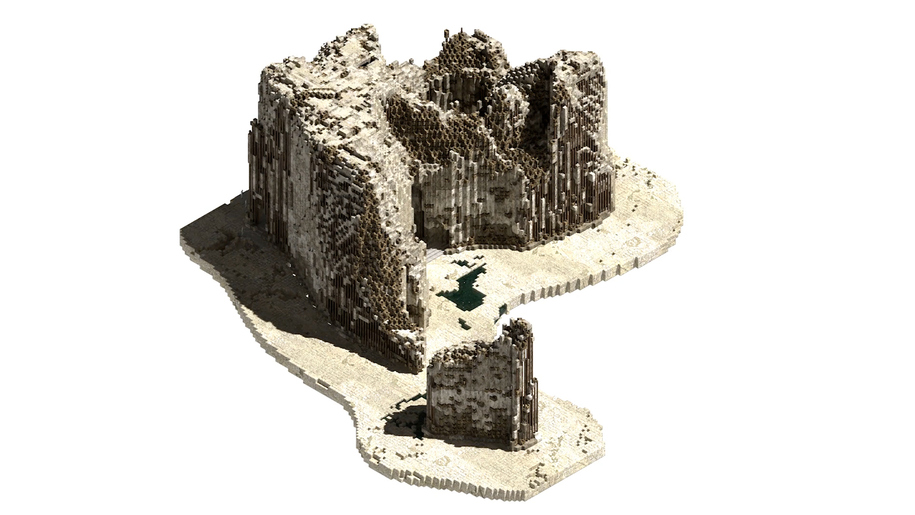
Plans
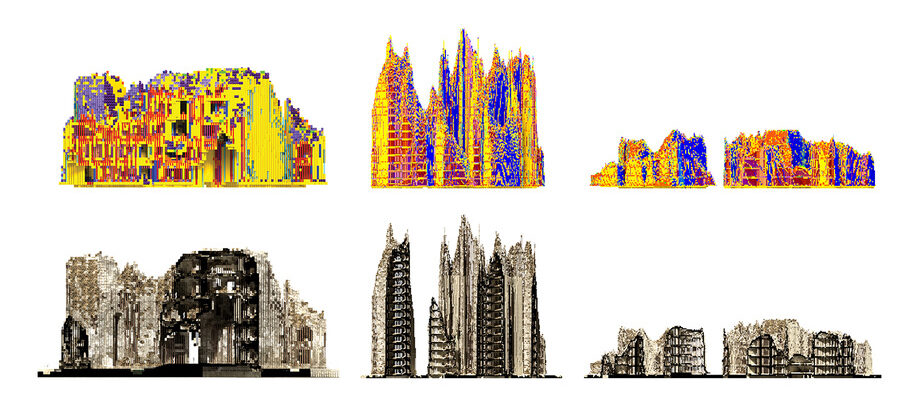
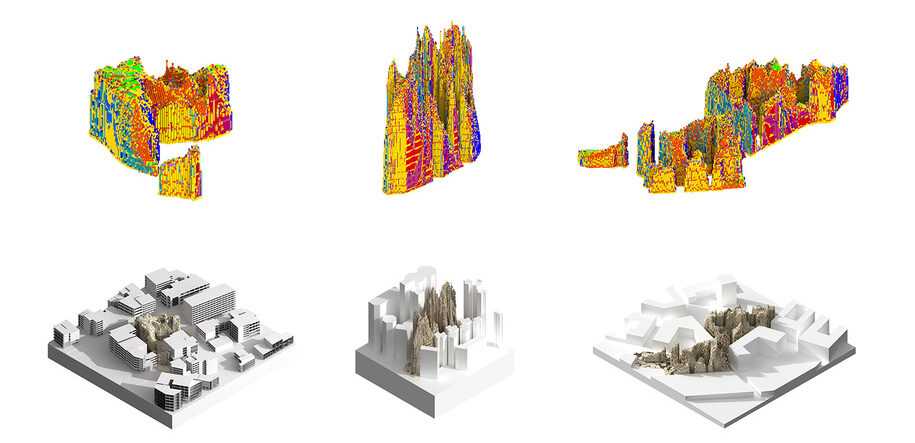
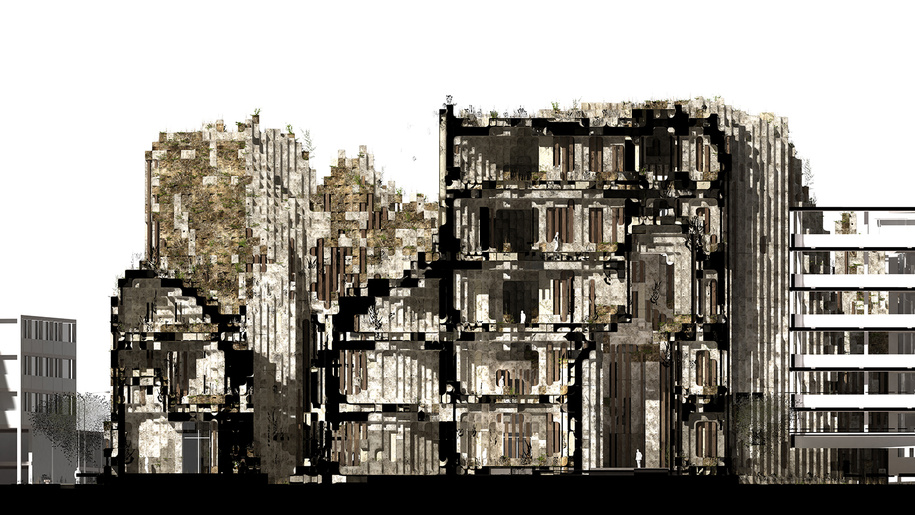
Credits & Details
Project name: CryptoGAN
Type: Design Thesis Project
University: The Bartlett School of Architecture, UCL
Programme: MArch Architectural Design
Team: Panagiotis Kalaitzidis | Pooja Harumalani | Aijia Wang
Tutors: Richard Beckett | Barry Wark | Levent Ozruh
Completed: September 2021
Contact email: panayotiskal@yahoo.com
READ ALSO: Votyrides Metochi in Ano Merabello: Proposal for the restoration and development of mild forms of animal husbandry | Diploma project by Maria Angelopoulou & Christos Christides
